
Roots
There is a quiet wonder in the very strands that crown us, a delicate architecture that holds secrets of its past and promises for its future. We often speak of hair’s feel, its look, but how deeply do we consider its inherent nature, its capacity to drink in moisture or turn it away? This is the whisper of porosity, a fundamental characteristic that shapes how our hair interacts with the world around it. Hair, a resilient protein filament, begins its journey deep within the scalp, emerging with an inherent structure.
Yet, from the moment it leaves the protective embrace of the follicle, it begins a subtle, ongoing conversation with its surroundings. This dialogue is not merely superficial; it can reshape the very fabric of the hair shaft, particularly its porosity.

What is Hair Porosity at Its Core
At its simplest, Hair Porosity describes your hair’s ability to absorb and retain moisture. It’s a measure of how open or closed the cuticle layer, the outermost protective layer of each hair strand, truly is. Think of the cuticle as a series of tiny, overlapping scales, much like shingles on a roof. When these scales lie flat and close together, the hair has low porosity.
It resists water, making it harder for moisture to enter, but also harder for it to escape once inside. Conversely, if these scales are lifted or damaged, the hair exhibits high porosity. Water rushes in with ease, yet just as quickly, it departs, leaving the hair feeling dry and vulnerable.
The inherent porosity of hair is largely determined by genetics. Our ancestral lineage often plays a significant role in dictating the density, curl pattern, and initial porosity of our strands. For those with textured hair, a spectrum of porosity levels is common, reflecting the wide diversity of curl and coil patterns.
However, while a genetic blueprint provides the starting point, it is far from the complete story. The world we inhabit, the elements we encounter, and the practices we adopt all play a part in altering this initial state.

The Hair’s Protective Outer Layer
The Cuticle is the hair’s primary defense against environmental stressors. It is composed of dead, flattened cells, typically 6-10 layers thick, that overlap in a shingle-like arrangement. This arrangement provides a protective barrier, safeguarding the inner cortex and medulla from physical and chemical damage. The integrity of these cuticle layers directly correlates with hair porosity.
When the cuticle is smooth and intact, it offers strong protection, leading to lower porosity. Damage, whether from styling, chemical treatments, or external forces, can lift, chip, or even remove these scales, compromising the barrier and increasing porosity.
Hair porosity, a measure of how hair absorbs and retains moisture, is influenced by the state of its outermost protective layer, the cuticle.
Beyond the cuticle, the Cell Membrane Complex (CMC) acts as a binding agent between cuticle cells and between the cuticle and the cortex. It is rich in lipids and plays a vital role in maintaining the hair’s structural cohesion and flexibility. Damage to the CMC can also contribute to increased porosity, as it weakens the bonds that keep the cuticle scales lying flat.

Initial Determinants of Hair Porosity
While environmental factors are a significant focus, it is worth acknowledging the foundational elements that set a hair strand’s initial porosity. These include:
- Genetic Makeup ❉ This is the most significant initial determinant. Hair density, curl pattern, and the inherent arrangement of cuticle scales are all inherited traits. Tightly coiled hair, for instance, often has a naturally raised cuticle, making it more prone to high porosity, though this is not a universal rule.
- Hair Health at Emergence ❉ The health of the hair follicle and the scalp environment during hair growth can influence the initial quality and integrity of the emerging strand. A healthy scalp promotes the growth of strong, well-formed hair with an intact cuticle.
- Hair Diameter ❉ Finer hair strands may appear to have higher porosity simply because they have less material to absorb moisture, while thicker strands might feel less porous due to their greater mass, though this is a general observation rather than a strict rule of cuticle behavior.
Understanding these foundational aspects provides a baseline from which to observe the subtle, and sometimes dramatic, shifts that environmental factors can bring about over time. The hair we are born with is merely the beginning of its unique story, a story continually being written by the world it encounters.

Ritual
To move from the inherent structure of our hair to its daily reality is to step into a realm of practices and conscious choices. Our routines, the very rituals we perform, hold sway over the hair’s interaction with its surroundings. They are not simply acts of cleansing or adornment; they are a continuous negotiation with the environment, capable of nudging hair porosity along its spectrum.
The gentle touch of a wash day, the careful application of a conditioner, or the deliberate choice of a styling method—each plays a part in the ongoing dialogue between our strands and the world. This section invites a closer look at how these practical, often repeated actions can influence the hair’s ability to receive and hold moisture, offering a path to understanding and responding to its evolving needs.
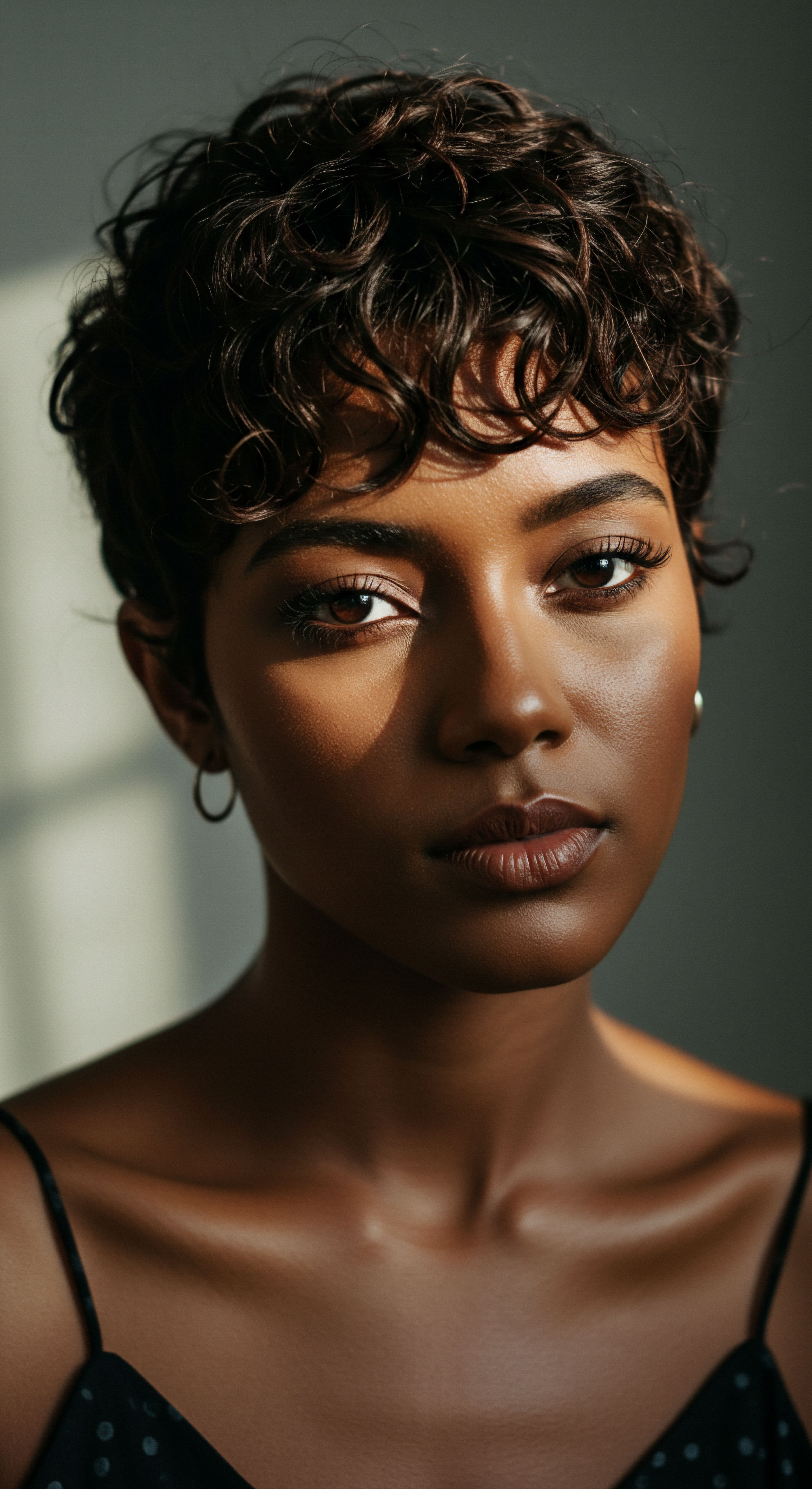
How Does Cleansing Impact Hair’s Moisture Exchange?
The act of Cleansing, while essential for hygiene, is a primary interaction point between hair and its environment. Shampoos, designed to remove impurities and excess oils, can also affect the cuticle. Products with harsher sulfates, for instance, can lift the cuticle more aggressively, leading to a temporary increase in porosity.
This is particularly noticeable in textured hair, which can be more susceptible to dryness. Conversely, sulfate-free or gentle cleansing creams are formulated to cleanse without overly disturbing the cuticle, helping to maintain a more balanced porosity.
The temperature of the water used during washing also plays a subtle but significant role. Hot water can cause the cuticle to swell and lift, potentially increasing porosity, while cooler water helps to flatten the cuticle, sealing in moisture. This interplay of product and temperature, repeated regularly, contributes to the hair’s long-term porosity profile.

Do Styling Practices Alter Porosity Over Time?
Beyond cleansing, our styling choices directly shape how hair porosity evolves. Heat Styling, in particular, exerts a powerful influence. Tools like flat irons, curling wands, and even high-heat blow dryers can cause irreversible damage to the cuticle, creating microscopic gaps and fissures.
This physical disruption directly increases hair porosity, making strands more vulnerable to moisture loss and external damage. The consistent application of high heat without adequate thermal protection can transform even naturally low-porosity hair into a highly porous state over time.
Regular heat styling without proper protection can permanently alter hair’s porosity by damaging the cuticle.
Similarly, chemical treatments, such as coloring, perming, or relaxing, deliberately alter the hair’s internal structure and external cuticle. These processes involve chemicals that open the cuticle scales to allow agents to penetrate the cortex. While often desired for their transformative effects, they inherently increase hair porosity, sometimes dramatically and permanently. Hair that has undergone repeated chemical treatments will almost invariably exhibit higher porosity, requiring specific care regimens to manage its increased need for moisture and protein.
Consider the daily routines of many individuals with textured hair:
- Co-Washing ❉ Using conditioner to cleanse can help maintain cuticle integrity and reduce porosity changes.
- Protective Styles ❉ Braids, twists, and buns can shield hair from daily environmental exposure, thus preserving cuticle health.
- Air Drying Vs. Diffusing ❉ Air drying minimizes heat exposure, while diffusing on a low-heat, high-airflow setting can reduce damage compared to direct heat.
These practices, when consistently applied, act as a buffer against environmental assaults, allowing the hair to retain its optimal porosity or recover from temporary shifts. Conversely, a regimen filled with aggressive manipulation, high heat, and harsh chemicals will invariably lead to increased porosity and compromised hair health.
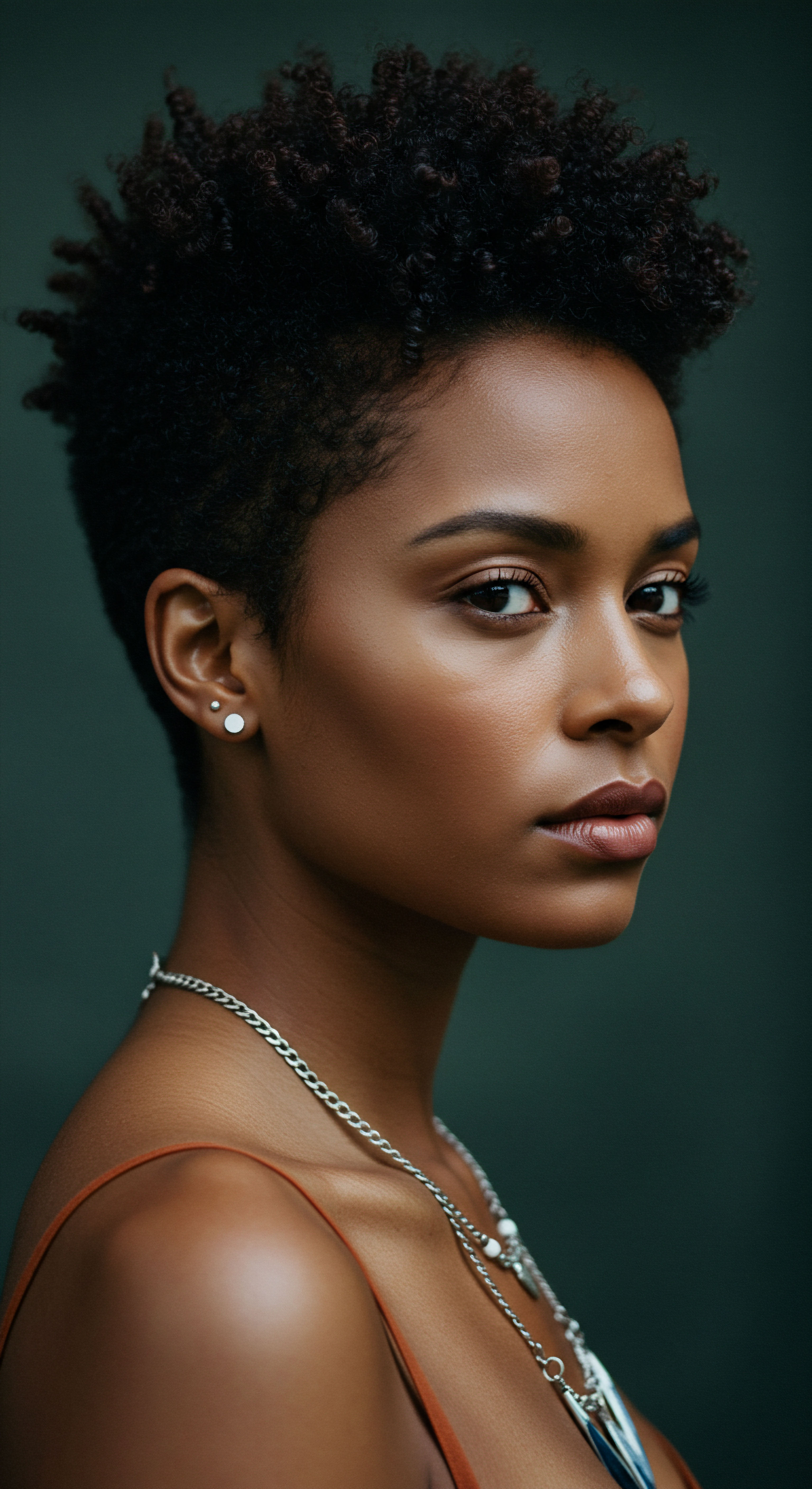
The Water We Use and Hair Porosity
The very water that cleanses our hair can be a silent influencer of its porosity. Hard Water, prevalent in many regions, contains elevated levels of dissolved minerals, primarily calcium and magnesium. These minerals can deposit on the hair shaft, leading to a dull appearance, reduced manageability, and, over time, a subtle but significant alteration in porosity. These mineral deposits can impede the cuticle’s ability to lie flat, effectively making the hair behave as if it has higher porosity, even if the underlying cuticle structure is relatively intact.
Research indicates that hard water can result in increased mineral deposits and decreased thickness in women’s hair shafts when observed under a scanning electron microscope. While some studies show no statistical difference in tensile strength or elasticity, others indicate a reduction in tensile strength with hard water exposure, suggesting a complex interplay of factors including the “hardness” level of the water itself.
The cumulative effect of washing hair in hard water for years can lead to a gradual build-up, impacting how products absorb and how moisture is retained. Using chelating shampoos or shower filters can mitigate this environmental impact, helping to maintain the hair’s natural porosity balance. This highlights a powerful point ❉ the elements within our immediate environment, often unseen, can be active participants in the ongoing story of our hair’s porosity.
| Environmental Factor High Humidity |
| Mechanism of Impact Moisture enters and swells the hair shaft, lifting cuticles. |
| Typical Porosity Change Temporary increase (frizz) |
| Environmental Factor Low Humidity/Dry Air |
| Mechanism of Impact Hair loses moisture, leading to dryness and potential cuticle lifting from dehydration. |
| Typical Porosity Change Temporary increase (brittleness) |
| Environmental Factor UV Radiation |
| Mechanism of Impact Degrades proteins and lipids, causing cuticle damage. |
| Typical Porosity Change Long-term increase |
| Environmental Factor Hard Water Minerals |
| Mechanism of Impact Deposits on hair shaft, impeding cuticle closure. |
| Typical Porosity Change Gradual increase |
| Environmental Factor Airborne Pollutants |
| Mechanism of Impact Particles cling to hair, causing oxidative stress and cuticle disruption. |
| Typical Porosity Change Gradual increase |

Relay
As we peel back the layers of understanding, from the inherent nature of hair to the rituals that shape its daily life, we arrive at a deeper, more interconnected plane. This “Relay” section signals a transition into the intricate dance between hair porosity and the broader environmental forces that play out over years, even decades. It is here that science, culture, and the subtle shifts of our world converge, revealing how the very air we breathe, the sun that warms us, and the changing climate can orchestrate profound alterations in our hair’s ability to absorb and retain moisture. We seek not merely to observe these changes, but to comprehend the ‘why’ behind them, drawing upon insights that illuminate the often-unseen dialogue between our textured strands and the planet itself.
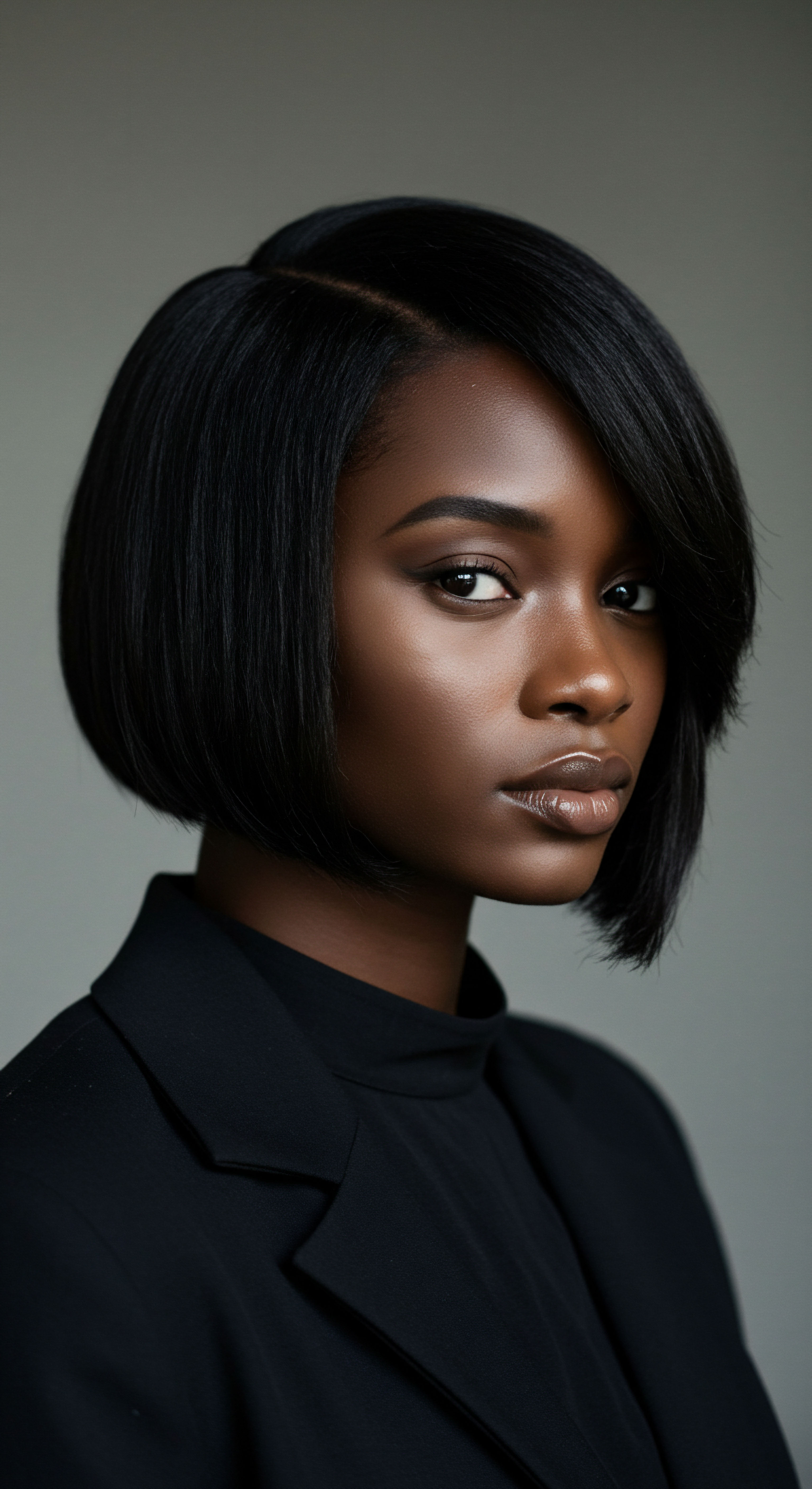
Can Climate Shifts Impact Hair’s Moisture Dynamics?
The global climate, with its shifting patterns of temperature and humidity, exerts a profound, long-term influence on hair porosity. Consider the relentless sun, a constant presence in many lives. Ultraviolet (UV) Radiation, particularly UVA and UVB rays, is a silent but potent aggressor. UV exposure degrades the proteins, particularly keratin, and lipids that form the hair shaft, leading to a compromised cuticle and an increase in porosity.
This damage is not instantaneous; it accumulates over time, making hair increasingly susceptible to moisture loss, brittleness, and a rougher texture. Research suggests that UV radiation causes a dose-dependent increase in hair porosity, with prolonged exposure exacerbating the effect.
Furthermore, the subtle, pervasive presence of Airborne Pollutants also plays a role. Microscopic particulate matter and volatile organic compounds (VOCs) can deposit on the hair and scalp, leading to oxidative stress. This stress can damage the hair’s structural proteins and lipids, resulting in increased cuticle lifting and, consequently, higher porosity. A study published in the Journal of Cosmetic Dermatology found that while particulate matter alone did not significantly affect the porosity of damaged hair, its combination with UV irradiation substantially increased it.
This suggests a synergistic effect, where multiple environmental stressors work in concert to alter hair’s fundamental properties. This is not merely about aesthetic concerns; it is about the hair’s resilience, its long-term health, and its capacity to perform its natural protective functions.
The effects of climate shifts extend beyond direct exposure to sun and pollution. Changes in agricultural practices influenced by climate can lead to micronutrient deficiencies in essential vitamins and minerals for hair health. This nutritional impact, while indirect, can compromise the hair’s ability to grow strong, healthy strands with an intact cuticle, thus influencing overall porosity over time. Water scarcity, another consequence of climate shifts, can limit access to clean water for hygiene, leading to scalp issues that indirectly affect hair health and, by extension, its porosity.
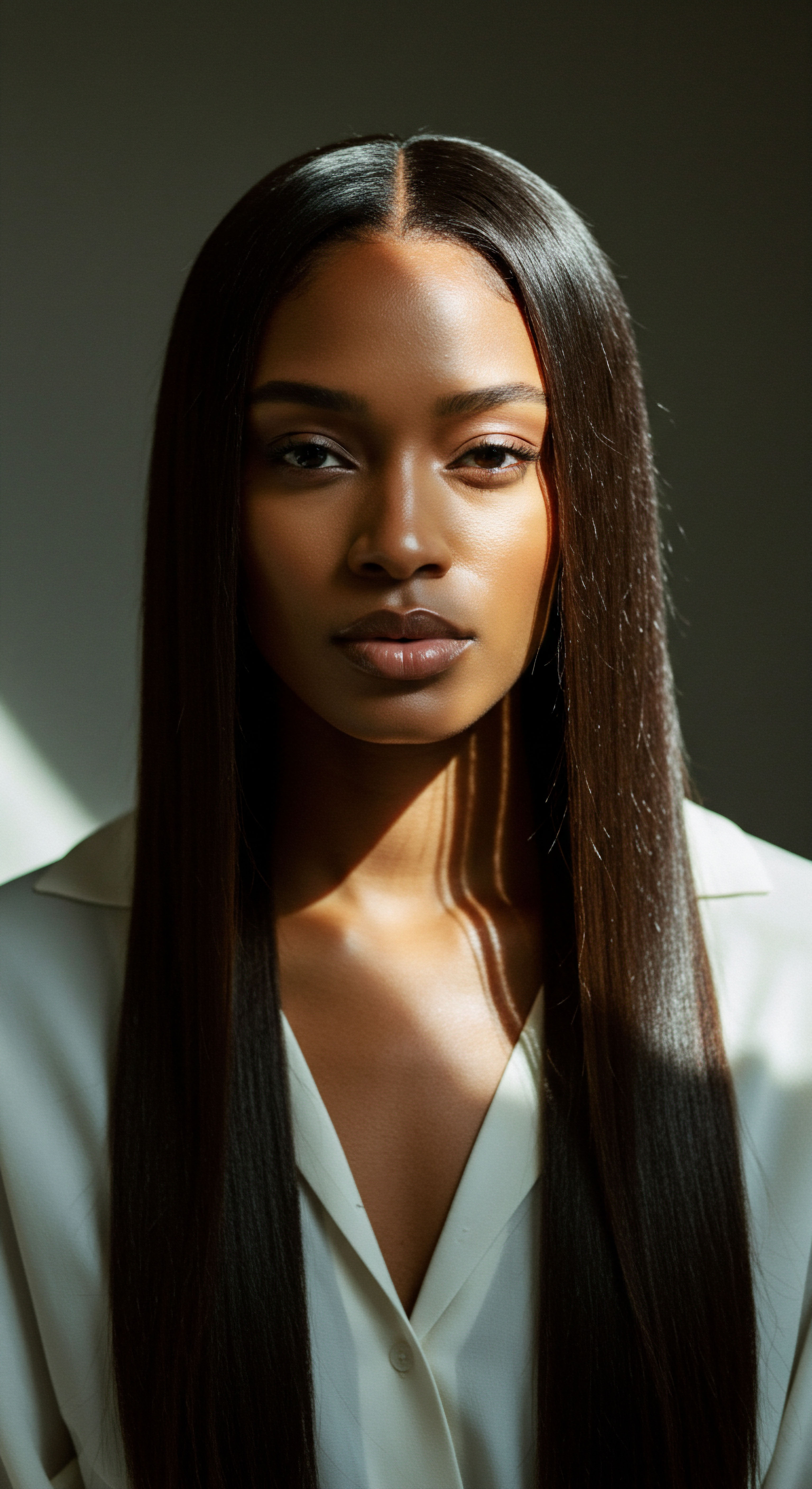
Do Industrial Pollutants Accumulate in Hair and Alter Its Structure?
Beyond daily atmospheric conditions, specific environmental pollutants, particularly heavy metals from industrial activity, can accumulate in hair and subtly yet significantly alter its porosity. Hair serves as a unique bio-indicator, capable of storing elements over time, often at concentrations much higher than those found in blood or urine, reflecting long-term exposure. A study investigating heavy metal accumulation in the scalp hair of steel factory workers versus individuals in rural areas found a considerable accumulation of metals like iron, copper, manganese, nickel, chromium, zinc, arsenic, lead, cobalt, and cadmium in the hair of workers in polluted zones. This accumulation, particularly of metals like calcium and magnesium from hard water, can stiffen hair fibers and reduce combability.
While the direct link between specific heavy metal accumulation and porosity changes is still an active area of research, the general consensus points to their disruptive potential. Heavy metals can bind to the hair shaft, leading to structural damage and weakening over time. This weakening, coupled with the deposition of these elements on the cuticle, can impede the cuticle’s natural ability to lie flat, thereby increasing hair’s effective porosity. The presence of these external substances can interfere with the hair’s natural moisture balance, making it feel rougher and less responsive to conditioning treatments.
The implications here are significant, particularly for communities living in close proximity to industrial areas, where exposure to these elements is a daily reality. The story of hair porosity then becomes intertwined with broader environmental justice concerns.
Hair acts as a bio-indicator, accumulating heavy metals from industrial pollutants over time, which can contribute to structural damage and increased porosity.
The subtle yet persistent action of these pollutants on the hair’s surface and internal structure contributes to a gradual shift in its moisture absorption capabilities. It underscores the notion that our hair is not merely a static entity, but a dynamic recorder of our environmental encounters.
The impact of environmental factors on hair is a complex, multi-layered phenomenon, with influences ranging from macro-level climate changes to microscopic particulate matter. Understanding these connections provides a deeper appreciation for the resilience of textured hair and the critical need for protective and restorative care strategies.
- Air Quality ❉ Exposure to fine particulate matter (PM2.5) and gaseous pollutants like sulfur dioxide and nitrogen dioxide can lead to oxidative stress on hair proteins and lipids, compromising cuticle integrity.
- Water Quality ❉ Hard water, with its high mineral content (calcium, magnesium), can deposit on the hair shaft, interfering with cuticle smoothness and potentially leading to a dull appearance and increased porosity.
- UV Radiation ❉ Prolonged exposure to sunlight’s UV rays degrades keratin and other hair proteins, leading to cuticle damage and an increase in hair’s ability to absorb, but not retain, moisture.
This interplay highlights that porosity is not a fixed attribute, but a fluid state, constantly responding to the world it inhabits. The choices we make about our hair care, while personal, exist within this larger environmental context, making awareness of these external forces a vital part of maintaining vibrant, healthy strands.
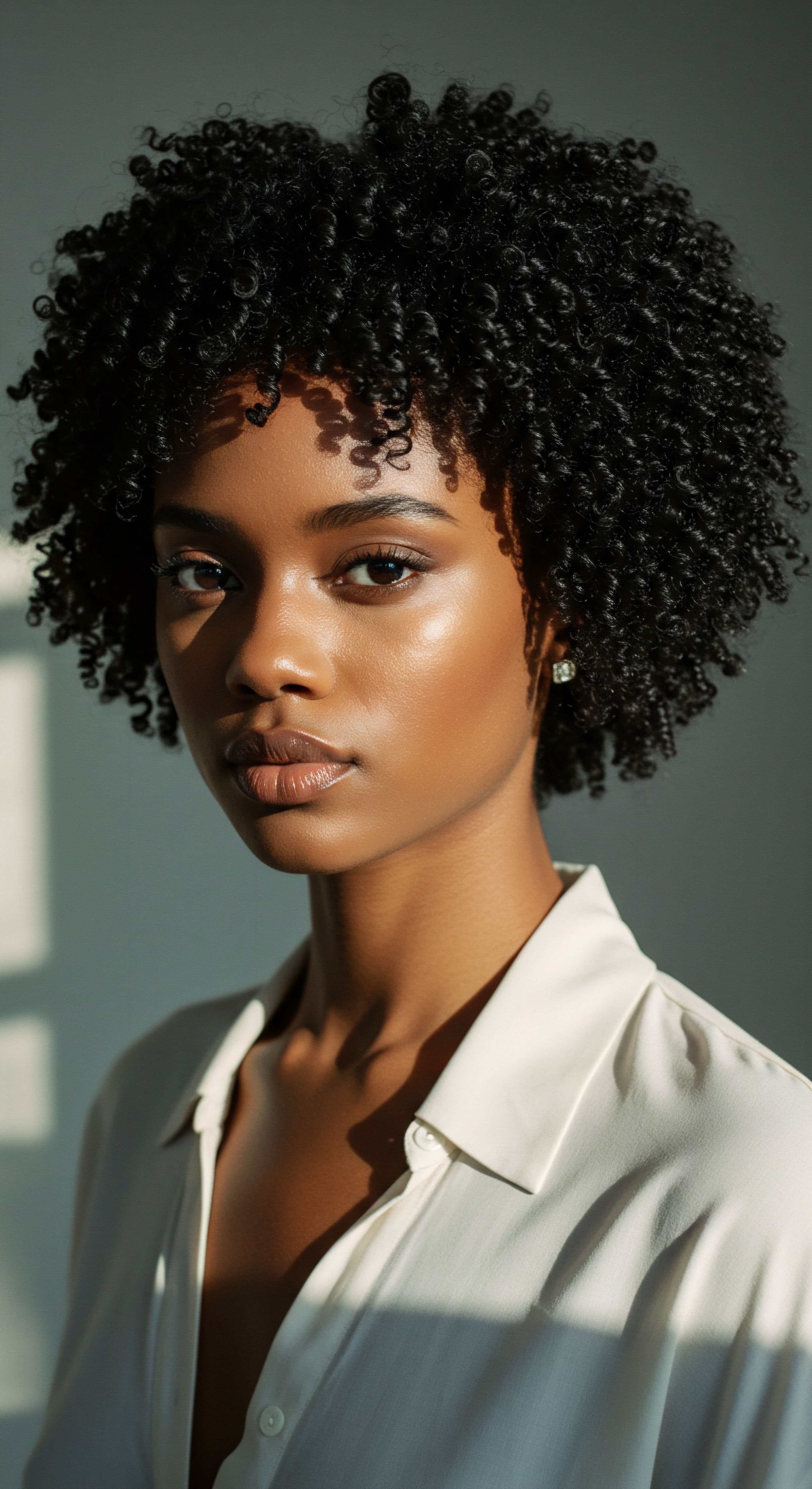
Reflection
As we conclude our exploration, a profound understanding emerges ❉ hair porosity, far from being a static, inherited trait, is a living testament to our shared existence with the world. It is a story told in every strand, etched by the sun’s embrace, shaped by the air we breathe, and altered by the water that cleanses us. Our hair, particularly textured hair, possesses an incredible capacity for adaptation, yet it also carries the subtle imprints of its environmental journey. This journey is not just about scientific data or chemical reactions; it is about the lived experience, the daily negotiation with forces seen and unseen, and the enduring beauty that persists through every shift.
To truly care for our hair, then, is to acknowledge this deep connection to our surroundings, to listen to its whispers, and to respond with wisdom and tenderness. It is a continuous dance of adaptation and resilience, a celebration of the unique story each head of hair tells in its silent, radiant language.

References
- Advanced Medical Hair Institute. (2023). Hair Loss, Meet Climate Change.
- LearnSkin. (2022). How Hard and Soft Water Affects the Skin and Hair.
- The Hairology Centre. (2024). Does Hard Water Affect Hair Shaft Strength?
- Rajendran, S. et al. (2017). Scanning electron microscopy study of hair shaft changes related to hardness of water. International Journal of Trichology.
- Yang, H. et al. (2024). Effects of ultraviolet rays and particulate matter on hair porosity in damaged hair. Journal of Cosmetic Dermatology.
- Cotton, R. et al. (2011). The structural implications of water hardness metal uptake by human hair. International Journal of Cosmetic Science.
- Cho, H. Y. et al. (2019). Protein Carbonylation as a Reliable Read-Out of Urban Pollution Damage/Protection of Hair Fibers. MDPI.
- Yoon, S. H. et al. (2023). Protection and Restoration of Damaged Hair via a Polyphenol Complex by Promoting Mechanical Strength, Antistatic, and Ultraviolet Protection Properties. MDPI.
- My Derma Store. (2024). The Impact of Climate Change on Hair Health and How to Protect It.
- NutriPATH. (n.d.). HAIR / URINE / BLOOD.
- Trüeb, R. M. (2015). UV damage of the Hair. ResearchGate.
- LearnSkin. (2020). Photo Protection for Hair – Protect Your Hair From UV Sunlight.
- Abdullah, A. A. & Al-Samarai, A. M. (2019). Heavy Metal Accumulation in Dust and Workers’ Scalp Hair as a Bioindicator for Air Pollution from a Steel Factory. Polish Journal of Environmental Studies.
- Al-Naqash, S. A. et al. (2022). A Bio-Indicator Pilot Study Screening Selected Heavy Metals in Female Hair, Nails, and Serum from Lifestyle Cosmetic, Canned Food, and Manufactured Drink Choices. PMC.